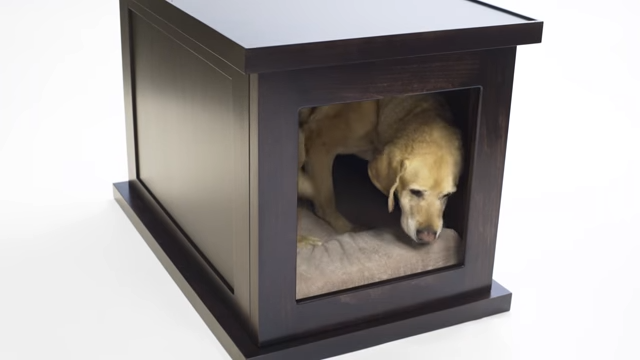Soundproofing a Ceiling: Complete Guide
Whether you live in an apartment building, a condo rent out unit or a floor of your house to renters, or just have a noisy family, finding peace and quiet might be difficult. And, if you don’t find a means for soundproofing a ceiling, you’re inviting more restless nights!
Before you know it, you’re wondering whether you can soundproof your ceiling just to escape all the noise pollution you’re hearing. Thankfully, with the invention of soundproofing, you no longer have to live with this horror. Soundproofing is an inexpensive and efficient way to keep the noise out and protect the quiet in the neighborhood. Ready to start discovering the key to a peaceful sleep? Read ahead!

First, Figure Out What You’re Hearing
Impact noise and airborne noise are the two types of noise that ceiling soundproofing is meant to reduce. Impact noise is a sound that passes through the building itself, rebounding down to you, and sounds like footsteps or a chair sliding across the floor in the unit above you.
Voices or music are examples of airborne noise, which spreads in waves across open areas inside the building. The final type of sound is flanking noise, we explained this in our article How to Soundproof an Air Vent, which generally originates from the outdoors and isn’t much reduced by soundproofing your ceiling.
Soundproofing your ceiling can reduce impact noise from above marginally, but it will improve airborne noise, therefore we recommend it for people who want “more privacy and a peaceful environment.”
Determine What Type of Ceiling You Have
After you’ve determined that the noise you’re hearing is certainly airborne or impact noise, you’ll need to determine what type of ceiling you have. Standard drywall, which is an exposed span of smooth material, and suspended drywall, often known as drop ceilings, are the two types to choose from. Suspended ceilings are generally used to conceal ducting or plumbing and are composed of framed-out tiles.
Drop ceilings are more challenging to soundproof than drywall ceilings because they have more room for sounds to bounce about in. However, they are not impossible!
Decide on the Scope of Your Project
Soundproofing is the type of project that can grow to fit whatever parameters you give it, so think about how much you want to take on, whether you’re willing and able to eliminate your existing ceiling to make changes, or whether soundproofing your existing ceiling is the better option.
Pre-construction consultation with a professional can help you save time and money. The greatest advice we can provide to someone who wants to do their DIY soundproofing is to do their homework on the items they’re buying and make sure they understand the job they’re working on before starting.
Methods of Soundproofing a Ceiling
There are a few different ways for properly soundproofing a ceiling listed below. Take note of the sort of ceiling you have, since it will have a direct impact on the soundproofing techniques you may use.
1. Soundproof Drywall
This type of drywall is thicker than the standard drywall used in ceiling construction, and as a result, it has a better “soundproofing quality.” However, while soundproof drywall is an effective method to prevent impact and airborne noise from moving through your ceiling from the floor above you, it can be costly. Note that soundproofing is expensive in general, regardless of the soundproofing materials utilized. A single soundproof drywall panel can cost upwards of $40, thus attempting to soundproof a big area can suddenly become prohibitively expensive (read more about soundproof drywall on thespruce.com).
2. Install Another Layer of Drywall
If you don’t want to replace your old drywall ceiling, consider adding another layer. Adding a layer of drywall can help to further absorb the airborne and impact noise, reducing sound waves passing through your ceiling assembly from the area above you.
3. Increase the Insulation
This material absorbs airborne and impact noise, as well as providing more insulation to assist reduce heat and cooling loss. Fiberglass insulation is affordable and simple to install (more info about fiberglass insulation on improvenet.com).
This technique, however, should be used exclusively on fiberglass ceilings. It can also be installed on sliding glass doors, or french doors. The structural elements – ductwork, lighting fixtures, electrical cables, and so on – that are typically located within these sorts of ceilings make it inconvenient for dropped ceilings.
Video: How to Install Ceiling Insulation Batts in a New House
4. Install Acoustic Panels
Installing acoustic panels is one of the safest and most reliable ways to solve your ceiling noise problem. With their low cost and ease of installation, you should be able to address your ceiling problem quickly and affordably. We found that soundproofing a ceiling in an apartment is a lot simpler than soundproofing a ceiling in a house, but there’s a lot more to know before putting up acoustic foam panels.
What you should know is that there are many different types of acoustic panels available on the market. There are foam panels that are also ideal in soundproofing walls, some that are wonderful for recording in the studio, and yet others that are good for the ceiling.
5. Install Acoustic Tiles
Acoustic tiles may be an efficient soundproofing solution for both drywall and dropped ceilings. These tiles are made of fiberglass, with a coating of MLV or sound-isolating foil on higher-end tiles. The tiles are kept in place by a metal grid, similar to the one that would be seen in a suspended ceiling. If you have a drywall ceiling, you may hold the acoustic tiles in place using specific clips that can be inserted into the drywall and the back of the panels.
Alternatively, acoustic panels may be fixed in place using construction glue on the backside of each panel and attaching them to the ceiling for even easier installation on a drywall ceiling. Once the panels are in place, fasten them to the ceiling using screws or nails.
Video: Ceiling Tiles – How to Replace
6. Use Mass-Loaded Vinyl
Acoustic panels can be large and heavy at times, therefore use mass loaded vinyl. Aside from that, we can agree that their design is somewhat dubious. If the look of the space is more important to you than the sound, acoustic foam panels may be an issue. As a result, you should definitely utilize vinyl mats if you want to preserve the interior and style of your space. These thick mattresses may be a wonderful choice for both soundproofing the room’s interior and soundproofing the room’s outside at the same time.
Vinyl, on the other hand, is the way to go if you want to perform some significant soundproofing for your ceiling to shield yourself from noisy neighbors. Keep in mind that vinyl mats may be used on floors, walls, office cubicles, mechanical rooms, and gaming rooms, among other surfaces.
7. Check for Holes in the Ceiling
It’s uncommon to notice this in modern buildings, but there are a number of older ones that were formerly the property of a single owner who didn’t care about the noise that came from these holes (since the whole house was his). If you’re still hearing sources of noise coming from the ceiling after following all of these techniques, look for cracks and small holes. Even if your ceiling has holes, you may be able to soundproof it for a reasonable price in a short period of time.
In addition, if you come across any, the best remedy is to glue them closed. Use Green Glue (official website) against tiny crevices, and watch it perform admirably. The issue was the color; it clashed with the rest of the space. So, make sure you get the appropriate one, since it might cause you to incur unnecessary costs and harm!
Video: How to Soundproof a Ceiling
Soundproof the Floors
In addition to or instead of soundproofing the ceiling, soundproofing the floor above you could be a good idea. The goal is to use sound-absorbing materials to keep airborne and impact sounds from the floor from passing through your ceiling. Of course, if the area above you belongs to someone else – for example, a neighbor in an apartment – you’ll need to talk to them about soundproofing their floors if you want to soundproof your ceiling.
1. Acoustic Floor Underlayment
Using a soundproofing underlayment for flooring materials such as carpets, tiles, and laminates may effectively prevent airborne and impact sounds from passing through the ceiling from the area above you. Acoustic floor underlayment comes in sticky rolls that may be cut and installed over the subfloor to provide a sound-absorbing barrier between the subfloor and the flooring material. The cost and techniques of installation differ depending on the type of underlayment you use and the flooring material that will be installed over it.
2. Dense Rugs
While dense rugs aren’t as effective as underlayment, they don’t require nearly as much building and are considerably less expensive and time demanding. Area rugs with a tight weave can be put on the floors above your ceiling to absorb sound; the finer the weave and the thicker the rug, the more sound it will absorb. You may also install soundproof padding below the rugs, such as MLV, to improve their noise absorption and prevent noise transfer through the flooring. Soundproof padding will also provide floors an extra layer of softness and produce an insulating effect, reducing the loss of warm and cooled air.
Video: How to Soundproof Floors in Apartment: Do-It-Yourself in 3 Easy Steps!
In Conclusion
Noise is a virtually unavoidable phenomenon. It’s not only with your annoying next-door neighbor, or your noise roommates. It’s in the streets outdoors, at work, at school, and in your house. We understand how aggravating it is to put up with all that obnoxious and exhausting noise just to get home to even more unwelcome noise.
Soundproofing is a relatively new concept that has come to the rescue. You may now construct your homes, strengthen your walls, ceilings, and floors to create a peaceful environment. Soundproofing is cost-effective and adaptable to a wide range of needs. You may do it yourself or hire an expert to help you. You may also seek the help of the entire family to make it a fun, educational, and practical experience!



